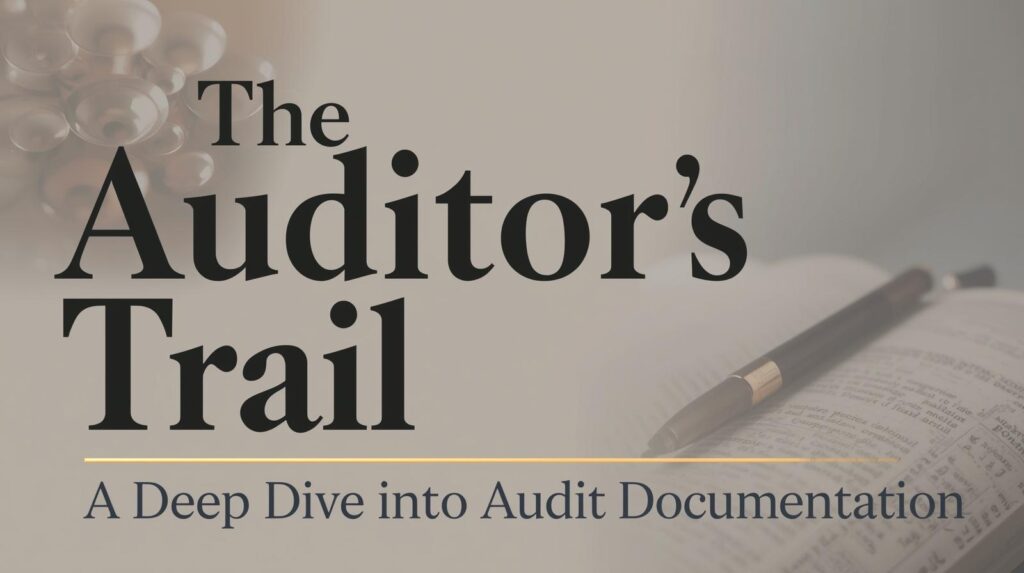The Conceptual Framework in Accounting: A Complete Guide
To an outsider, accounting can seem like a dense forest of arbitrary rules, acronyms, and regulations. But beneath this complexity lies a strong, logical foundation that governs every principle and standard. This foundation is the Conceptual Framework. Think of it as the Constitution for financial accounting—a document that doesn’t list every specific law, but provides the underlying objectives and principles from which all other rules are derived.
The Conceptual Framework for Financial Reporting is a coherent system of interrelated objectives and fundamentals that prescribes the nature, function, and limits of financial accounting. In the United States, it is established by the Financial Accounting Standards Board (FASB) and serves as the underlying theory for developing consistent and logical Generally Accepted Accounting Principles (GAAP).
Why does this matter? Because without it, accounting standards could be developed haphazardly, leading to inconsistent and incomparable financial reports that would be useless to investors, lenders, and managers. The framework ensures that accounting is a discipline built on sound theory, not a collection of random opinions. This guide will walk you through the framework level by level, breaking down its abstract concepts into a clear, understandable structure.
Level 1: The “Why” — The Objective of Financial Reporting
Everything in accounting starts with a single, primary objective. This is the “North Star” that guides all other principles. It answers the fundamental question: What is the purpose of all this work?
The Core Objective
The objective of general-purpose financial reporting is to provide financial information about the reporting entity that is useful to existing and potential investors, lenders, and other creditors in making decisions about providing resources to the entity. These decisions involve buying, selling, or holding equity and debt instruments, and providing or settling loans and other forms of credit.
In simple terms, the goal is to help the people who fund a business make smart decisions. An investor needs to decide if a company is a good investment. A bank needs to decide if a company can pay back a loan. The financial statements—the balance sheet, income statement, etc.—are the primary tools they use to make these critical judgments. Therefore, the information in those statements must be, above all else, useful for decision-making.
Level 2: The Bridge — Fundamental Concepts
If Level 1 is the “why,” Level 2 is the bridge that connects the objective to the specific accounting rules. It establishes what makes financial information useful (its characteristics) and defines what is being reported on (the elements).
Part 1: The Qualitative Characteristics of Accounting Information
These are the ingredients that make financial information useful. They are the essential attributes that transform raw data into decision-useful reporting. A deeper understanding is essential for any accounting student, so it’s worth taking the time to explore the question, “what is meant by qualitative characteristics of accounting information? Explain briefly.“
Fundamental Characteristics:
- Relevance: The information must be capable of making a difference in a decision. It has predictive value (helps forecast the future), confirmatory value (provides feedback on past evaluations), and is subject to the concept of materiality (it’s significant enough to matter).
- Faithful Representation: The information must faithfully represent the economic phenomena it purports to represent. This means it must be complete (includes all necessary information), neutral (free from bias), and free from error.
Enhancing Characteristics:
- Comparability: Information is more useful if it can be compared with similar information about other entities and with similar information about the same entity for another period.
- Verifiability: Different knowledgeable and independent observers could reach a consensus that a particular depiction is a faithful representation.
- Timeliness: Having information available to decision-makers before it loses its capacity to influence decisions.
- Understandability: Classifying, characterizing, and presenting information clearly and concisely makes it understandable.
Part 2: The Elements of Financial Statements
The FASB defines ten core elements that structure the financial statements, providing a common language to describe the financial reality of a business.
“Moment-in-Time” (Balance Sheet) Elements:
- Assets: Probable future economic benefits obtained or controlled by a particular entity as a result of past transactions.
- Liabilities: Probable future sacrifices of economic benefits arising from present obligations to transfer assets or provide services in the future.
- Equity: The residual interest in the assets of an entity that remains after deducting its liabilities.
“Period-of-Time” (All Other Statements) Elements:
- Revenues & Expenses: Inflows and outflows from an entity’s primary, ongoing central operations.
- Gains & Losses: Inflows and outflows from an entity’s peripheral or incidental transactions.
- Comprehensive Income: The change in equity during a period from non-owner sources.
- Investments by Owners & Distributions to Owners: Transactions between the entity and its owners in their capacity as owners.
Essential Tools for Accounting Mastery
To truly grasp these concepts, students and professionals rely on authoritative resources and powerful tools. Here are some of the most respected materials in the field, available on Amazon.

Intermediate Accounting, 18th Edition
Widely considered the “bible” of financial accounting education, Kieso’s textbook provides an in-depth, authoritative explanation of the conceptual framework and U.S. GAAP.
View on Amazon
Texas Instruments BA II Plus Calculator
An essential tool for any accounting or finance professional. It’s approved for use on the CPA and CFA exams and is perfect for time-value-of-money calculations and other complex functions.
View on Amazon
The Intelligent Investor
Warren Buffett calls this “by far the best book on investing ever written.” It teaches you how to use the information from financial statements—the output of the framework—to make sound investment decisions.
View on AmazonLevel 3: The “How” — Recognition, Measurement, and Disclosure
This is the most operational level of the framework, providing the assumptions, principles, and constraints that accountants use in their day-to-day work.
A. Foundational Assumptions
- Economic Entity: Assumes that a business is a distinct economic unit, separate from its owners and from other businesses.
- Going Concern: Assumes the business will continue to operate for the foreseeable future, justifying practices like depreciation.
- Monetary Unit: Assumes that money is the common denominator for economic activity and provides a stable basis for measurement. However, this assumption is not without its challenges. To see how it’s tested in the real world, it’s crucial to understand “what is the basic accounting problem created by the monetary unit assumption when there is significant inflation?“
- Periodicity: Assumes the life of a business can be divided into artificial time periods (e.g., months, quarters, years) for the purpose of issuing reports.
B. Guiding Principles
- Measurement Principle: Dictates that we generally measure and report transactions based on either historical cost (the original acquisition price) or fair value (the price to sell an asset today).
- Revenue Recognition Principle: Requires that companies recognize revenue in the accounting period in which the performance obligation is satisfied.
- Expense Recognition (Matching) Principle: Dictates that expenses should be matched with the revenues they helped to generate in the same accounting period.
- Full Disclosure Principle: Requires that financial statements provide all information of sufficient importance to influence the judgment of an informed user.
C. The Cost Constraint
The final check on the system. This constraint dictates that the benefit derived from providing financial information should outweigh the cost of providing it. It ensures that the pursuit of perfect information does not place an undue burden on reporting entities.
Frequently Asked Questions
Who created the conceptual framework?
In the United States, the Conceptual Framework is developed and maintained by the Financial Accounting Standards Board (FASB). The International Accounting Standards Board (IASB) maintains a similar framework for International Financial Reporting Standards (IFRS).
Is the conceptual framework an accounting standard?
No. This is a critical distinction. The framework is not an accounting standard (like GAAP) and has no direct authority. Instead, it is the theoretical foundation upon which the authoritative standards are built. When a new accounting issue arises, the FASB refers to the framework to develop a consistent and logical standard.
Why is the conceptual framework so important?
Its importance is threefold: 1) It enables the FASB to develop a consistent set of standards. 2) It helps solve new and emerging practical problems by providing a theoretical basis for a solution. 3) It increases users’ understanding of and confidence in financial reporting.
Conclusion: The Bedrock of Financial Reporting
The Conceptual Framework is the silent partner in every financial report. It is the logic that ensures an asset in one company is comparable to an asset in another, that revenue is recognized consistently across industries, and that the ultimate goal of providing useful information is always at the forefront.
While it may seem abstract, a solid grasp of the framework is what separates a bookkeeper from a true accounting professional. It provides the “why” behind the “what,” enabling accountants to exercise professional judgment and maintain the integrity and reliability of financial information, which is the very bedrock of our capital markets.


